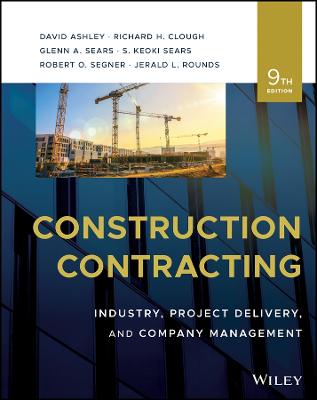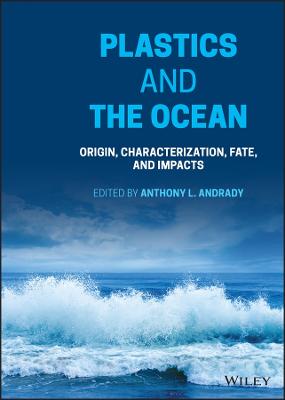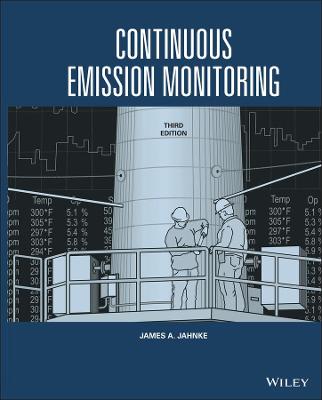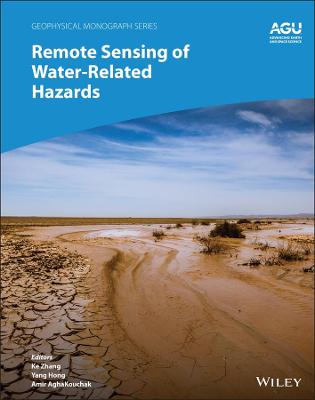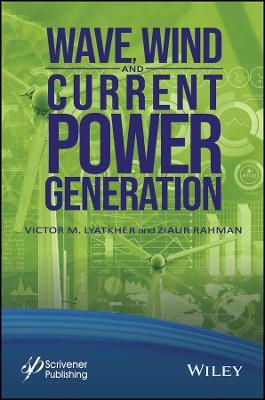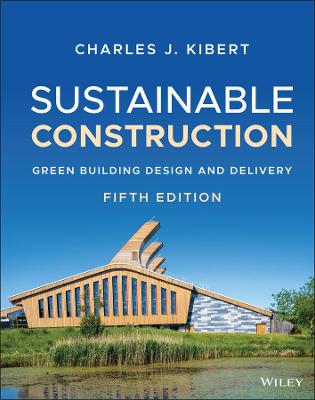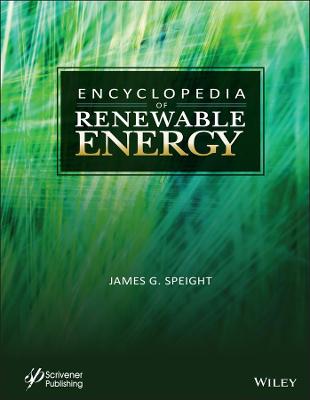Gas Hydrate in Water Treatment
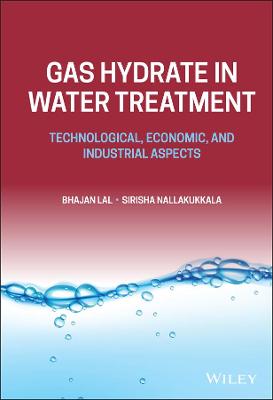 -15%
portes grátis
-15%
portes grátis
Gas Hydrate in Water Treatment
Technological, Economic, and Industrial Aspects
Nallakukkala, Sirisha; Lal, Bhajan
John Wiley & Sons Inc
04/2022
304
Dura
Inglês
9781119866114
15 a 20 dias
596
1 Introduction to Desalination 1
Jesa Singh, Vinayagam Sivabalan, and Bhajan Lal
1.1 Coping with Water Scarcity 1
1.2 Origin of Gas Hydrates 4
1.3 Concept of Hydrate Formation 5
1.4 Application of Gas Hydrate in Desalination 7
1.5 Phase Behavior and Thermodynamic Measurement 7
1.6 Kinetics of Hydrate Formation 8
1.6.1 Induction Time 10
1.6.2 Moles of Gas Used Up 10
1.6.3 Rate of Hydrate Formation 11
1.6.4 Water to Hydrate Conversion 11
1.7 Hydrate Decomposition 12
2 Technologies in Desalination 15
Jai Krishna Sahith and Bhajan Lal
2.1 Introduction 15
2.2 Conventional Desalination Methods 15
2.2.1 Multistage Flash Desalination 15
2.2.2 Multi-effect Desalination 19
2.2.3 Reverse Osmosis 21
2.2.4 Other Desalination Methods 23
2.3 Gas Hydrate-based Desalination 26
3 Prospectives on Gas Hydrates-based Desalination 31
Jesa Singh and Bhajan Lal
3.1 Introduction 31
3.2 General Proposed Gas Hydrate-based Desalination Design 32
3.2.1 Design 1 32
3.2.2 Jacketed Reactor Designs 33
3.2.2.1 Design 1 33
3.2.2.2 Design 2 36
3.2.3 Silica Sand Bed Crystallizer Reactor Design 39
3.2.3.1 Design 1 39
3.2.3.2 Design 2 41
3.2.3.3 Design 3 42
3.2.4 Stirred Reactor Design 43
3.2.4.1 Design 1 43
3.2.4.2 Design 2 45
3.2.4.3 Design 3 47
3.2.5 Novel Reactor Design 50
4 Hydrate Promoters in Gas Hydrate-based Desalination 55
Sirisha Nallakukkala and Bhajan Lal
4.1 Chemical Additives in Desalination 55
4.2 Overview of Gas Hydrate Additives in the Desalination Process 57
4.3 Favorable Conditions Used to Determine Suitable Hydrating Agents 58
4.4 Formers and Promoters in Hydrate-based Desalination 58
4.5 Hydrate Formers Investigation 64
4.5.1 Gaseous Hydrate Formers 64
4.5.2 Liquid Hydrate Formers 65
4.5.3 Functional Additives 66
4.6 Conclusion 68
5 Modeling of Seawater Desalination by Gas Hydrate Method 77
Sirisha Nallakukkala and Bhajan Lal
5.1 Introduction 77
5.2 Gas Hydrate Thermodynamic and Kinetic models 78
5.3 Statistical Thermodynamic Modeling of Hydrate Equilibrium 79
5.3.1 Modeling Thermodynamic Equilibrium of Cyclopentane Hydrates in the Presence of Salts 84
5.3.1.1 Standard Freezing Point Depression Calculation 85
5.3.1.2 Hu-Lee-Sum Correlation 85
5.3.1.3 Kihara Approach 86
5.3.1.4 Activity-Based Occupancy Correlation Approach 86
5.3.2 Modeling of Thermodynamic Equilibrium of Mixed Cyclopentane/Carbon Dioxide Hydrates 87
5.4 Kinetic Models for Hydrate Formation 88
5.4.1 Mathematical Model for Seawater Desalination 88
5.4.2 Lattice Boltzmann Model for Hydrate Formation 92
5.5 Machine Learning Models to Predict Desalination Efficiency 95
5.5.1 Machine Learning Techniques to Model Hydrate-based Desalination 95
5.5.2 Adaptive Neuro-fuzzy Inference System 95
5.5.2.1 Layer 1: Input Membership Function Layer 96
5.5.2.2 Layer 2: Product Layer 97
5.5.2.3 Layer 3: Normalization Layer 97
5.5.2.4 Layer 4: Output Membership Function Layer 97
5.5.2.5 Layer 5: Overall Output Layer 98
5.5.3 SVM Approach 98
5.5.4 Genetic Algorithm 99
5.5.5 Conclusion 100
6 Gas Hydrates in Wastewater Treatment 113
Adeel Ur Rehman, Dzulkarnain B Zaini, and Bhajan Lal
6.1 Ecosystem Approach to Pollution Control 113
6.2 Interaction of Wastewater with the Ecosystem 114
6.3 Sources of Wastewater 116
6.3.1 Agricultural Wastewater 116
6.3.2 Municipal Wastewater 118
6.3.3 Industrial Wastewater 118
6.4 Impact of Wastewater on Ecology 122
6.5 Current Technologies for Addressing Wastewater Issues 123
6.5.1 Chemical Precipitation 123
6.5.2 Adsorption 124
6.5.3 Membrane Technologies 125
6.5.4 Electrodialysis 125
6.6 Gas Hydrates 126
6.6.1 Formation Process of Gas Hydrates 127
6.6.2 Gas Hydrate Growth Process 127
6.6.3 Kinetics of Hydrate Formation 127
6.6.3.1 Effects of Salt During Hydrate Formation 128
6.6.3.2 Effect of Water to Gas Ratio 129
6.6.3.3 Effect of Pressure During Hydrate Formation 130
6.6.3.4 Effect of Stirrer during Hydrate Formation 130
6.6.4 Hydrate Dissociation 130
6.6.4.1 Water Recovery 130
6.6.4.2 Removal Efficiency, Enrichment Factor, and Yield 131
6.6.5 Kinetic Models of Gas Hydrate Growth 131
7 Artificial Intelligence in Water Treatment Process Optimization 139
Jai Krishna Sahith and Bhajan Lal
7.1 Introduction 139
7.2 Background Information 140
7.3 Optimization of Water Treatment Plants 141
7.4 Application of Artificial Neural Networks for Freshwater Treatment 144
7.5 Application of Artificial Neural Networks for Wastewater Treatment 145
7.6 Other Artificial Intelligence Techniques for Wastewater Treatment 147
7.7 Application on Gas Hydrate Plants 147
8 Standard Analytical Techniques for Analysis of Wastewater 155
Sirisha Nallakukkala and Bhajan Lal
8.1 Methods, Scope, and Their Applications 155
8.2 Physical Properties of Water 155
8.2.1 Color 156
8.2.1.1 Visual Comparison Method 156
8.2.1.2 Spectroscopic Single-wavelength Method 156
8.2.1.3 Spectrophotometric Multiwavelength Method 157
8.2.1.4 Tristimulus Spectrophotometric Method 157
8.2.1.5 ADMI Weighted-ordinate Spectrophotometric Method 158
8.2.2 Turbidity 158
8.2.2.1 Nephelometric Method 159
8.2.3 Odor 159
8.2.3.1 Threshold Odor Test 160
8.2.4 Taste 160
8.2.4.1 Flavor Threshold Test 161
8.2.4.2 Flavor Rating Assessment 161
8.2.4.3 Flavor Profile Analysis 161
8.2.5 Acidity 162
8.2.5.1 Titration Method (Acidity Measurement) 162
8.2.6 Alkalinity 163
8.2.6.1 Titration Method (Alkalinity Measurement) 163
8.2.7 Calcium Carbonate Saturation 164
8.2.7.1 Saturation Index Basis 165
8.2.7.2 Saturation Index by Experimental Determination 165
8.2.7.3 Calcium Carbonate Precipitation Potential for Alkalinity Measurement 166
8.2.8 Hardness 166
8.2.8.1 Calcium Carbonate Precipitation Potential for Hardness Measurement 166
8.2.8.2 EDTA Titrimetric Method 167
8.2.9 Conductivity 167
8.2.10 Salinity 168
8.2.11 Solids 169
8.2.11.1 Total Dissolved Solids 169
8.2.11.2 Total Suspended Solids 169
8.2.12 Asbestos 170
8.2.13 Oxidation-Reduction Potential 171
8.2.14 Tests and Methods on Sludges 171
8.2.14.1 Oxygen Consumption Rate 172
8.2.14.2 Sludge Volume Index 172
8.2.14.3 Specific Gravity 172
8.2.14.4 Zone Settling Rate 172
8.2.14.5 Time for Capillary Suction 172
8.2.15 Anaerobic Sludge Digester Gas Analysis 173
8.2.15.1 Volumetric Method 173
8.2.15.2 Gas Chromatographic Method 174
8.3 Analysis of Inorganic Metal Constituents 174
8.3.1 Conductivity 175
8.3.2 Dissolved and Suspended Metals Filtration 175
8.3.3 Digestion of Metals 175
8.3.3.1 Selection of Acid 176
8.3.3.2 Nitric Acid Digestion 176
8.3.3.3 Microwave-assisted Digestion 177
8.3.4 Metals by Atomic Absorption Spectrometry 177
8.3.4.1 Metals by Flame Atomic Absorption Spectrometry 178
8.3.4.2 Direct Air-Acetylene Flame Method 178
8.3.4.3 Extraction/Air-Acetylene Flame Method 178
8.3.4.4 Direct Nitrous Oxide-Acetylene Flame Method 179
8.3.5 Cold Vapor Atomic Absorption Spectrometry 179
8.3.6 Electrothermal Atomic Absorption Spectrometry 179
8.3.7 Arsenic and Selenium by Hydride Generation 180
8.3.8 Inductively Coupled Plasma Optical Emission Spectroscopy 180
8.3.9 Inductively Coupled Plasma-Mass Spectrometry 181
8.3.10 Anodic Stripping Voltammetry 181
8.4 Analysis of Inorganic Anion Constituents 182
8.4.1 Ion Chromatography with Chemical Suppression of Eluent Conductivity 182
8.4.2 Single-column Ion Chromatography with Direct Conductivity Detection 182
8.4.3 Ion Chromatography Determination of Oxyhalides and Bromide 183
8.4.4 Capillary Ion Electrophoresis with Indirect Ultraviolet Detection 183
8.5 Analysis of Organic Constituents 184
8.5.1 Biochemical Oxygen Demand 184
8.5.2 Five-Day BOD Test 184
8.5.3 Ultimate BOD Test 185
8.5.4 Chemical Oxygen Demand 185
8.5.5 Total Organic Carbon 186
8.5.6 Oil and Grease 187
8.5.7 Phenols 188
8.5.8 Surfactants 189
8.5.9 Tannin and Lignin 190
8.5.10 Organic and Volatile Acids 190
8.6 Analysis of Radioactive Materials 191
8.7 Toxicity Test Systems, Requirements, Evaluation, and Implementation 192
8.7.1 Requirements for Toxicity Test 193
8.7.2 Categories of Toxicity Test: Uses, Pros, and Cons 193
8.7.3 Short-term Toxicity Test 194
8.7.3.1 Range-finding Examination 194
8.7.3.2 Short-term Definitive Examination 194
8.7.3.3 Intermediate Toxicity Examination 194
8.7.3.4 Long-term Partial or Complete Toxicity Examination 195
8.7.3.5 Short-term Examination for Estimating Chronic Toxicity 195
8.7.4 Toxicity Test Systems 195
8.7.5 Source Evaluation of Toxicity 196
8.7.6 Toxicity Reduction Evaluation 196
8.7.6.1 Pretreatment Control Evaluation 197
8.7.6.2 In-plant Control Evaluation 197
8.7.7 Toxicity Control Implementation 197
8.7.8 Calculating, Investigating, and Reporting Toxicity Results 198
9 Economic Analysis of Desalination Process 207
Vinayagam Sivabalan, Jesa Singh, and Bhajan Lal
9.1 Overview 207
9.2 Cost of Treated Water 208
9.2.1 Fixed Cost 210
9.2.2 Variable Cost 210
9.3 Factors Affecting the Product Cost 211
9.4 Case Studies 214
9.4.1 Multistage Flash Distillation 215
9.4.2 Multi-Effect Evaporation 216
9.4.3 Mechanical Vapor Compression (MVC) 217
9.4.4 Reverse Osmosis 218
9.4.5 Gas Hydrate-Based Desalination 219
10 Renewable Energy in Desalination and Hybrid Technologies 237
Jai Krishna Sahith and Bhajan Lal
10.1 Introduction 237
10.2 Renewable Energy 238
10.3 Renewable Energy Usage in Desalination 242
10.3.1 Solar Energy 242
10.3.2 Wind Energy 243
10.3.3 Nuclear Energy 246
10.3.4 Geothermal Energy 247
10.3.5 Wave Energy 248
10.4 Hybrid Technologies 249
10.4.1 Forward Osmosis-Nanofiltration Hybrid Systems 250
10.4.2 Electrodialysis-Reverse Osmosis Hybrid Systems 251
10.4.3 Reverse Osmosis-Membrane Distillation Hybrid Systems 252
10.4.4 Forward Osmosis-Membrane Distillation Hybrid Systems 253
10.4.5 Forward Osmosis-Electrodialysis 253
10.4.6 Freeze Desalination-Membrane Distillation Hybrid Systems 254
10.4.7 Gas Hydrates-Reverse Osmosis Hybrid System 254
10.4.8 Gas Hydrate-Capacitive Deionization Processes (CDI) 255
10.5 Future Prospects 256
10.6 Conclusion 257
11 Waste Brine Management 269
Sirisha Nallakukkala and Bhajan Lal
11.1 Introduction 269
11.2 Waste Brine Watercourse Constituents 270
11.3 Waste Brine Discharge Methods 270
11.3.1 Sewer Discharge 270
11.3.2 Surface Water Discharge 270
11.3.3 Evaporation 271
11.3.4 Recycling and Reuse 271
11.3.5 Deep Well Injection 271
11.3.6 Environmental Impact and Regulatory Compliance 272
11.4 Waste Brine Management Methods 272
11.4.1 Chemical Precipitation 273
11.4.2 Adsorption 273
11.4.3 Bipolar Membrane Electrodialysis 274
11.4.4 Crystallization and Evaporation 274
11.4.5 Acid and Caustic Production 275
11.4.6 Regeneration of Wetlands and Agricultural Applications 275
11.4.7 Softener Brine Recycling 276
11.4.8 De-icing and Dust Control 276
11.4.9 Recovery and Trade of Solid Salts 276
11.4.10 Cooling 276
11.4.11 Brine Incineration 276
11.5 Waste Brine Valorization: Opportunities and Challenges 277
11.5.1 Waste Brine as a Resource and Its Application in Gas Hydrates 277
11.5.2 Membrane-based Process for Valorization of Waste Brine 278
11.5.3 Recovery of Calcium and Its Conversion to Calcium Sulfate 280
11.5.4 Retrieval of Magnesium Oxide from Waste Brine 280
11.5.5 Opportunities and Challenges 281
11.6 Evolving Waste Brine Treatment Strategies and Sights for Future Feasibility 282
11.7 Conclusion 282
12 Post-Treatment of Desalinated Water: Effects and Remedy by Remineralization Methods 289
Adeel Ur Rehman, Dzulkarnain B Zaini, and Bhajan Lal
12.1 Introduction 289
12.2 Safeguarding Human Health 290
12.2.1 Desalinated Water Quality 290
12.2.2 Remineralization of Desalinated Water for Consumption 291
12.3 Impacts on Agriculture 292
12.3.1 Effects of Desalinated Water on the Irrigation System 292
12.3.2 Remineralization Needed for Irrigation 294
12.4 Corrosion of Distribution Network and Scaling 294
12.4.1 Corrosion Problems Involving Desalinated Water 294
12.4.2 Remineralization Needed for Corrosion Control 295
12.5 Remineralization Techniques 295
12.5.1 Emerging Techniques 295
12.6 Conclusion 297
Index 303
1 Introduction to Desalination 1
Jesa Singh, Vinayagam Sivabalan, and Bhajan Lal
1.1 Coping with Water Scarcity 1
1.2 Origin of Gas Hydrates 4
1.3 Concept of Hydrate Formation 5
1.4 Application of Gas Hydrate in Desalination 7
1.5 Phase Behavior and Thermodynamic Measurement 7
1.6 Kinetics of Hydrate Formation 8
1.6.1 Induction Time 10
1.6.2 Moles of Gas Used Up 10
1.6.3 Rate of Hydrate Formation 11
1.6.4 Water to Hydrate Conversion 11
1.7 Hydrate Decomposition 12
2 Technologies in Desalination 15
Jai Krishna Sahith and Bhajan Lal
2.1 Introduction 15
2.2 Conventional Desalination Methods 15
2.2.1 Multistage Flash Desalination 15
2.2.2 Multi-effect Desalination 19
2.2.3 Reverse Osmosis 21
2.2.4 Other Desalination Methods 23
2.3 Gas Hydrate-based Desalination 26
3 Prospectives on Gas Hydrates-based Desalination 31
Jesa Singh and Bhajan Lal
3.1 Introduction 31
3.2 General Proposed Gas Hydrate-based Desalination Design 32
3.2.1 Design 1 32
3.2.2 Jacketed Reactor Designs 33
3.2.2.1 Design 1 33
3.2.2.2 Design 2 36
3.2.3 Silica Sand Bed Crystallizer Reactor Design 39
3.2.3.1 Design 1 39
3.2.3.2 Design 2 41
3.2.3.3 Design 3 42
3.2.4 Stirred Reactor Design 43
3.2.4.1 Design 1 43
3.2.4.2 Design 2 45
3.2.4.3 Design 3 47
3.2.5 Novel Reactor Design 50
4 Hydrate Promoters in Gas Hydrate-based Desalination 55
Sirisha Nallakukkala and Bhajan Lal
4.1 Chemical Additives in Desalination 55
4.2 Overview of Gas Hydrate Additives in the Desalination Process 57
4.3 Favorable Conditions Used to Determine Suitable Hydrating Agents 58
4.4 Formers and Promoters in Hydrate-based Desalination 58
4.5 Hydrate Formers Investigation 64
4.5.1 Gaseous Hydrate Formers 64
4.5.2 Liquid Hydrate Formers 65
4.5.3 Functional Additives 66
4.6 Conclusion 68
5 Modeling of Seawater Desalination by Gas Hydrate Method 77
Sirisha Nallakukkala and Bhajan Lal
5.1 Introduction 77
5.2 Gas Hydrate Thermodynamic and Kinetic models 78
5.3 Statistical Thermodynamic Modeling of Hydrate Equilibrium 79
5.3.1 Modeling Thermodynamic Equilibrium of Cyclopentane Hydrates in the Presence of Salts 84
5.3.1.1 Standard Freezing Point Depression Calculation 85
5.3.1.2 Hu-Lee-Sum Correlation 85
5.3.1.3 Kihara Approach 86
5.3.1.4 Activity-Based Occupancy Correlation Approach 86
5.3.2 Modeling of Thermodynamic Equilibrium of Mixed Cyclopentane/Carbon Dioxide Hydrates 87
5.4 Kinetic Models for Hydrate Formation 88
5.4.1 Mathematical Model for Seawater Desalination 88
5.4.2 Lattice Boltzmann Model for Hydrate Formation 92
5.5 Machine Learning Models to Predict Desalination Efficiency 95
5.5.1 Machine Learning Techniques to Model Hydrate-based Desalination 95
5.5.2 Adaptive Neuro-fuzzy Inference System 95
5.5.2.1 Layer 1: Input Membership Function Layer 96
5.5.2.2 Layer 2: Product Layer 97
5.5.2.3 Layer 3: Normalization Layer 97
5.5.2.4 Layer 4: Output Membership Function Layer 97
5.5.2.5 Layer 5: Overall Output Layer 98
5.5.3 SVM Approach 98
5.5.4 Genetic Algorithm 99
5.5.5 Conclusion 100
6 Gas Hydrates in Wastewater Treatment 113
Adeel Ur Rehman, Dzulkarnain B Zaini, and Bhajan Lal
6.1 Ecosystem Approach to Pollution Control 113
6.2 Interaction of Wastewater with the Ecosystem 114
6.3 Sources of Wastewater 116
6.3.1 Agricultural Wastewater 116
6.3.2 Municipal Wastewater 118
6.3.3 Industrial Wastewater 118
6.4 Impact of Wastewater on Ecology 122
6.5 Current Technologies for Addressing Wastewater Issues 123
6.5.1 Chemical Precipitation 123
6.5.2 Adsorption 124
6.5.3 Membrane Technologies 125
6.5.4 Electrodialysis 125
6.6 Gas Hydrates 126
6.6.1 Formation Process of Gas Hydrates 127
6.6.2 Gas Hydrate Growth Process 127
6.6.3 Kinetics of Hydrate Formation 127
6.6.3.1 Effects of Salt During Hydrate Formation 128
6.6.3.2 Effect of Water to Gas Ratio 129
6.6.3.3 Effect of Pressure During Hydrate Formation 130
6.6.3.4 Effect of Stirrer during Hydrate Formation 130
6.6.4 Hydrate Dissociation 130
6.6.4.1 Water Recovery 130
6.6.4.2 Removal Efficiency, Enrichment Factor, and Yield 131
6.6.5 Kinetic Models of Gas Hydrate Growth 131
7 Artificial Intelligence in Water Treatment Process Optimization 139
Jai Krishna Sahith and Bhajan Lal
7.1 Introduction 139
7.2 Background Information 140
7.3 Optimization of Water Treatment Plants 141
7.4 Application of Artificial Neural Networks for Freshwater Treatment 144
7.5 Application of Artificial Neural Networks for Wastewater Treatment 145
7.6 Other Artificial Intelligence Techniques for Wastewater Treatment 147
7.7 Application on Gas Hydrate Plants 147
8 Standard Analytical Techniques for Analysis of Wastewater 155
Sirisha Nallakukkala and Bhajan Lal
8.1 Methods, Scope, and Their Applications 155
8.2 Physical Properties of Water 155
8.2.1 Color 156
8.2.1.1 Visual Comparison Method 156
8.2.1.2 Spectroscopic Single-wavelength Method 156
8.2.1.3 Spectrophotometric Multiwavelength Method 157
8.2.1.4 Tristimulus Spectrophotometric Method 157
8.2.1.5 ADMI Weighted-ordinate Spectrophotometric Method 158
8.2.2 Turbidity 158
8.2.2.1 Nephelometric Method 159
8.2.3 Odor 159
8.2.3.1 Threshold Odor Test 160
8.2.4 Taste 160
8.2.4.1 Flavor Threshold Test 161
8.2.4.2 Flavor Rating Assessment 161
8.2.4.3 Flavor Profile Analysis 161
8.2.5 Acidity 162
8.2.5.1 Titration Method (Acidity Measurement) 162
8.2.6 Alkalinity 163
8.2.6.1 Titration Method (Alkalinity Measurement) 163
8.2.7 Calcium Carbonate Saturation 164
8.2.7.1 Saturation Index Basis 165
8.2.7.2 Saturation Index by Experimental Determination 165
8.2.7.3 Calcium Carbonate Precipitation Potential for Alkalinity Measurement 166
8.2.8 Hardness 166
8.2.8.1 Calcium Carbonate Precipitation Potential for Hardness Measurement 166
8.2.8.2 EDTA Titrimetric Method 167
8.2.9 Conductivity 167
8.2.10 Salinity 168
8.2.11 Solids 169
8.2.11.1 Total Dissolved Solids 169
8.2.11.2 Total Suspended Solids 169
8.2.12 Asbestos 170
8.2.13 Oxidation-Reduction Potential 171
8.2.14 Tests and Methods on Sludges 171
8.2.14.1 Oxygen Consumption Rate 172
8.2.14.2 Sludge Volume Index 172
8.2.14.3 Specific Gravity 172
8.2.14.4 Zone Settling Rate 172
8.2.14.5 Time for Capillary Suction 172
8.2.15 Anaerobic Sludge Digester Gas Analysis 173
8.2.15.1 Volumetric Method 173
8.2.15.2 Gas Chromatographic Method 174
8.3 Analysis of Inorganic Metal Constituents 174
8.3.1 Conductivity 175
8.3.2 Dissolved and Suspended Metals Filtration 175
8.3.3 Digestion of Metals 175
8.3.3.1 Selection of Acid 176
8.3.3.2 Nitric Acid Digestion 176
8.3.3.3 Microwave-assisted Digestion 177
8.3.4 Metals by Atomic Absorption Spectrometry 177
8.3.4.1 Metals by Flame Atomic Absorption Spectrometry 178
8.3.4.2 Direct Air-Acetylene Flame Method 178
8.3.4.3 Extraction/Air-Acetylene Flame Method 178
8.3.4.4 Direct Nitrous Oxide-Acetylene Flame Method 179
8.3.5 Cold Vapor Atomic Absorption Spectrometry 179
8.3.6 Electrothermal Atomic Absorption Spectrometry 179
8.3.7 Arsenic and Selenium by Hydride Generation 180
8.3.8 Inductively Coupled Plasma Optical Emission Spectroscopy 180
8.3.9 Inductively Coupled Plasma-Mass Spectrometry 181
8.3.10 Anodic Stripping Voltammetry 181
8.4 Analysis of Inorganic Anion Constituents 182
8.4.1 Ion Chromatography with Chemical Suppression of Eluent Conductivity 182
8.4.2 Single-column Ion Chromatography with Direct Conductivity Detection 182
8.4.3 Ion Chromatography Determination of Oxyhalides and Bromide 183
8.4.4 Capillary Ion Electrophoresis with Indirect Ultraviolet Detection 183
8.5 Analysis of Organic Constituents 184
8.5.1 Biochemical Oxygen Demand 184
8.5.2 Five-Day BOD Test 184
8.5.3 Ultimate BOD Test 185
8.5.4 Chemical Oxygen Demand 185
8.5.5 Total Organic Carbon 186
8.5.6 Oil and Grease 187
8.5.7 Phenols 188
8.5.8 Surfactants 189
8.5.9 Tannin and Lignin 190
8.5.10 Organic and Volatile Acids 190
8.6 Analysis of Radioactive Materials 191
8.7 Toxicity Test Systems, Requirements, Evaluation, and Implementation 192
8.7.1 Requirements for Toxicity Test 193
8.7.2 Categories of Toxicity Test: Uses, Pros, and Cons 193
8.7.3 Short-term Toxicity Test 194
8.7.3.1 Range-finding Examination 194
8.7.3.2 Short-term Definitive Examination 194
8.7.3.3 Intermediate Toxicity Examination 194
8.7.3.4 Long-term Partial or Complete Toxicity Examination 195
8.7.3.5 Short-term Examination for Estimating Chronic Toxicity 195
8.7.4 Toxicity Test Systems 195
8.7.5 Source Evaluation of Toxicity 196
8.7.6 Toxicity Reduction Evaluation 196
8.7.6.1 Pretreatment Control Evaluation 197
8.7.6.2 In-plant Control Evaluation 197
8.7.7 Toxicity Control Implementation 197
8.7.8 Calculating, Investigating, and Reporting Toxicity Results 198
9 Economic Analysis of Desalination Process 207
Vinayagam Sivabalan, Jesa Singh, and Bhajan Lal
9.1 Overview 207
9.2 Cost of Treated Water 208
9.2.1 Fixed Cost 210
9.2.2 Variable Cost 210
9.3 Factors Affecting the Product Cost 211
9.4 Case Studies 214
9.4.1 Multistage Flash Distillation 215
9.4.2 Multi-Effect Evaporation 216
9.4.3 Mechanical Vapor Compression (MVC) 217
9.4.4 Reverse Osmosis 218
9.4.5 Gas Hydrate-Based Desalination 219
10 Renewable Energy in Desalination and Hybrid Technologies 237
Jai Krishna Sahith and Bhajan Lal
10.1 Introduction 237
10.2 Renewable Energy 238
10.3 Renewable Energy Usage in Desalination 242
10.3.1 Solar Energy 242
10.3.2 Wind Energy 243
10.3.3 Nuclear Energy 246
10.3.4 Geothermal Energy 247
10.3.5 Wave Energy 248
10.4 Hybrid Technologies 249
10.4.1 Forward Osmosis-Nanofiltration Hybrid Systems 250
10.4.2 Electrodialysis-Reverse Osmosis Hybrid Systems 251
10.4.3 Reverse Osmosis-Membrane Distillation Hybrid Systems 252
10.4.4 Forward Osmosis-Membrane Distillation Hybrid Systems 253
10.4.5 Forward Osmosis-Electrodialysis 253
10.4.6 Freeze Desalination-Membrane Distillation Hybrid Systems 254
10.4.7 Gas Hydrates-Reverse Osmosis Hybrid System 254
10.4.8 Gas Hydrate-Capacitive Deionization Processes (CDI) 255
10.5 Future Prospects 256
10.6 Conclusion 257
11 Waste Brine Management 269
Sirisha Nallakukkala and Bhajan Lal
11.1 Introduction 269
11.2 Waste Brine Watercourse Constituents 270
11.3 Waste Brine Discharge Methods 270
11.3.1 Sewer Discharge 270
11.3.2 Surface Water Discharge 270
11.3.3 Evaporation 271
11.3.4 Recycling and Reuse 271
11.3.5 Deep Well Injection 271
11.3.6 Environmental Impact and Regulatory Compliance 272
11.4 Waste Brine Management Methods 272
11.4.1 Chemical Precipitation 273
11.4.2 Adsorption 273
11.4.3 Bipolar Membrane Electrodialysis 274
11.4.4 Crystallization and Evaporation 274
11.4.5 Acid and Caustic Production 275
11.4.6 Regeneration of Wetlands and Agricultural Applications 275
11.4.7 Softener Brine Recycling 276
11.4.8 De-icing and Dust Control 276
11.4.9 Recovery and Trade of Solid Salts 276
11.4.10 Cooling 276
11.4.11 Brine Incineration 276
11.5 Waste Brine Valorization: Opportunities and Challenges 277
11.5.1 Waste Brine as a Resource and Its Application in Gas Hydrates 277
11.5.2 Membrane-based Process for Valorization of Waste Brine 278
11.5.3 Recovery of Calcium and Its Conversion to Calcium Sulfate 280
11.5.4 Retrieval of Magnesium Oxide from Waste Brine 280
11.5.5 Opportunities and Challenges 281
11.6 Evolving Waste Brine Treatment Strategies and Sights for Future Feasibility 282
11.7 Conclusion 282
12 Post-Treatment of Desalinated Water: Effects and Remedy by Remineralization Methods 289
Adeel Ur Rehman, Dzulkarnain B Zaini, and Bhajan Lal
12.1 Introduction 289
12.2 Safeguarding Human Health 290
12.2.1 Desalinated Water Quality 290
12.2.2 Remineralization of Desalinated Water for Consumption 291
12.3 Impacts on Agriculture 292
12.3.1 Effects of Desalinated Water on the Irrigation System 292
12.3.2 Remineralization Needed for Irrigation 294
12.4 Corrosion of Distribution Network and Scaling 294
12.4.1 Corrosion Problems Involving Desalinated Water 294
12.4.2 Remineralization Needed for Corrosion Control 295
12.5 Remineralization Techniques 295
12.5.1 Emerging Techniques 295
12.6 Conclusion 297
Index 303

